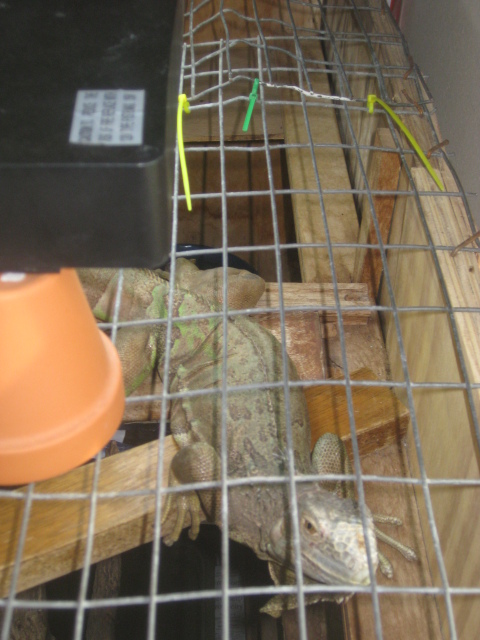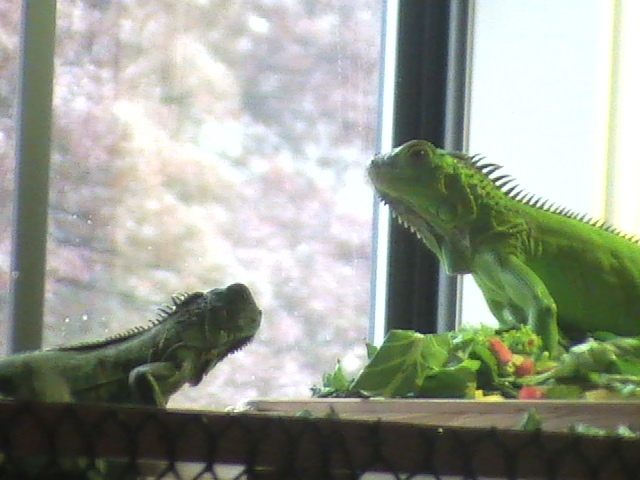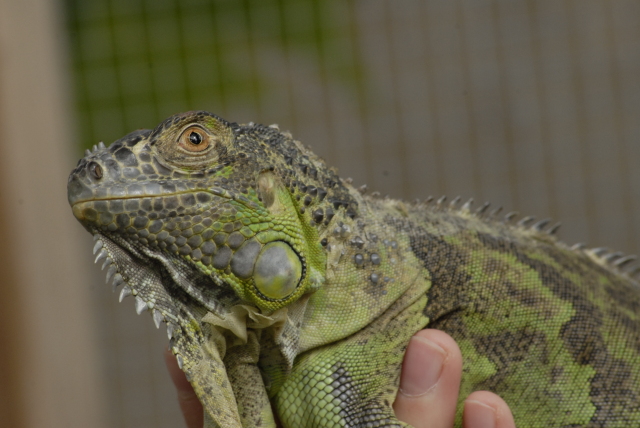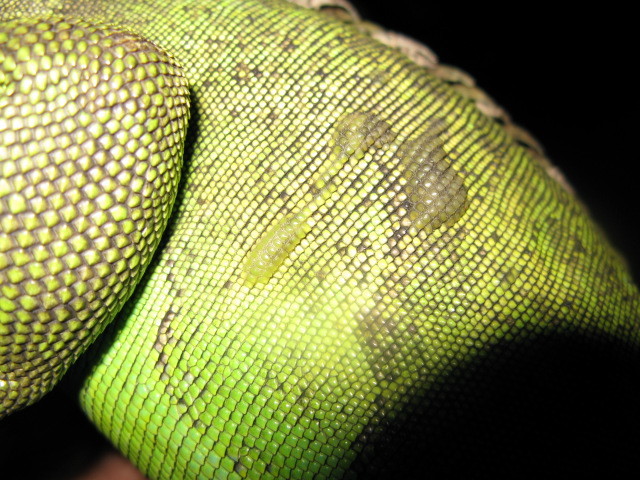Questionhi i got a baby green iguana over the summer and after his first he shed his scales turned black mostly around his feet and toes and legs and armpit area but not completely. Is this normal and if not should i be worried. Also ever sine i got him his front foot is swollen has always been like that???
AnswerDear Tay,
It is great that you are noticing changes in your iguana and paying attention to them because oftenttimes iguanas do not show when they are ill or have a problem going on so a lot of people don't find out sometimes until it is too late. This being said, when you see physical abnormalities on an iguana, it is time to address your husbandry. Husbandry is the living conditions you provide for your iguana. A lot of times when skin becomes irritated, it may be as simple as removing woodchips or bark that you may have at the bottom of your cage and replacing it with something easier to clean like a towel or astroturf. If you are using woodchips or other particles for substrate, these tend to trap moisture, bacteria, etc. and become a breeding ground for skin infections. This being said, I want you to also consider the following possibilities:
Referencing anapsid.org, there are 2 reasons that I believe may be causing your iguana's skin to blacken or become dark and discolored...
(1) Vesicular Dermatitis-Vesicular dermatitis, sometimes called blister disease, scale rot, or necrotizing dermatitis, is commonly caused by housing reptiles in moist, dirty environments. As the animal is forced to lie on damp substrate saturated with rotting food or feces and urates, the skin becomes infected. Watery blisters are the first sign. The infection may pass into the body causing septicemia (infection of the blood) and passing to internal organs. In small reptiles, or reptiles already severely weakened from illness, environmental or psychological stresses, infection may be rapid, and rapidly fatal. The skin may rot away from the initial blister, leaving the body more susceptible to bacterial and fungal invasion and thermal burns.
(2) Blackening Skin Syndrome- "An all-over black and crusty skin may be found on iguanas who have been housed in filthy or otherwise inappropriate conditions (too cold, overcrowded, filthy). Once such an iguana is housed and fed properly, and soaked daily in warm povidone-iodine/water baths, the first shed can be startling, with the black scabby skin splitting apart to reveal the new, brilliant green skin below."
When you are dealing with something like this, it is IMPERATIVE to let a veterinarian diagnose the animal and treat the condition because they may require antibiotics or a prescription cream. Consider applying antifungal ointment containing the ingredient tolnaftate until you can get to the vet and also thoroughly cleaning your iguana's tank. If you are using wood chips or any other type of particles for a substrate, these can become very unsanitary, so remove the particles and lay a towel down in there so you can pull it out and wash it frequently.
As far as the swollen foot, this is something that I can't know for sure the cause but the first thing that comes to mind is MAKE SURE YOU HAVE A UVB light on your iguana. Most reptile basking lamps at pet stores DO NOT have UVB, they only have UVA. If your iguana doesn't get UVB, they cannot digest calcium and this makes their bones very weak over time and they can break their bones very easily and can eventually paralyze and then kill your iguana. If he has not had a UVB lamp, it is possible this calcium deficiency has set in and making his bones easy to break.
I hope this helps you and your baby, but please I urge you to have him seen by a reptile vet.
Sincerely,
Sara

 Ursula Update
QuestionQUESTION: Hi Diane!
I just wanted to update yo
Ursula Update
QuestionQUESTION: Hi Diane!
I just wanted to update yo
 rescued iguana
Question
2 Igs
Hello! We rescued a small green iguana t
rescued iguana
Question
2 Igs
Hello! We rescued a small green iguana t
 spikes
QuestionQUESTION: Hi, I got my Iguana when he was about
spikes
QuestionQUESTION: Hi, I got my Iguana when he was about
 blisters on my iguanas side
Question
blisters
we rescued this iguana(franky)
blisters on my iguanas side
Question
blisters
we rescued this iguana(franky)
 7 month old iguana
QuestionMy iguana isnt using her back legs. There is a
7 month old iguana
QuestionMy iguana isnt using her back legs. There is a